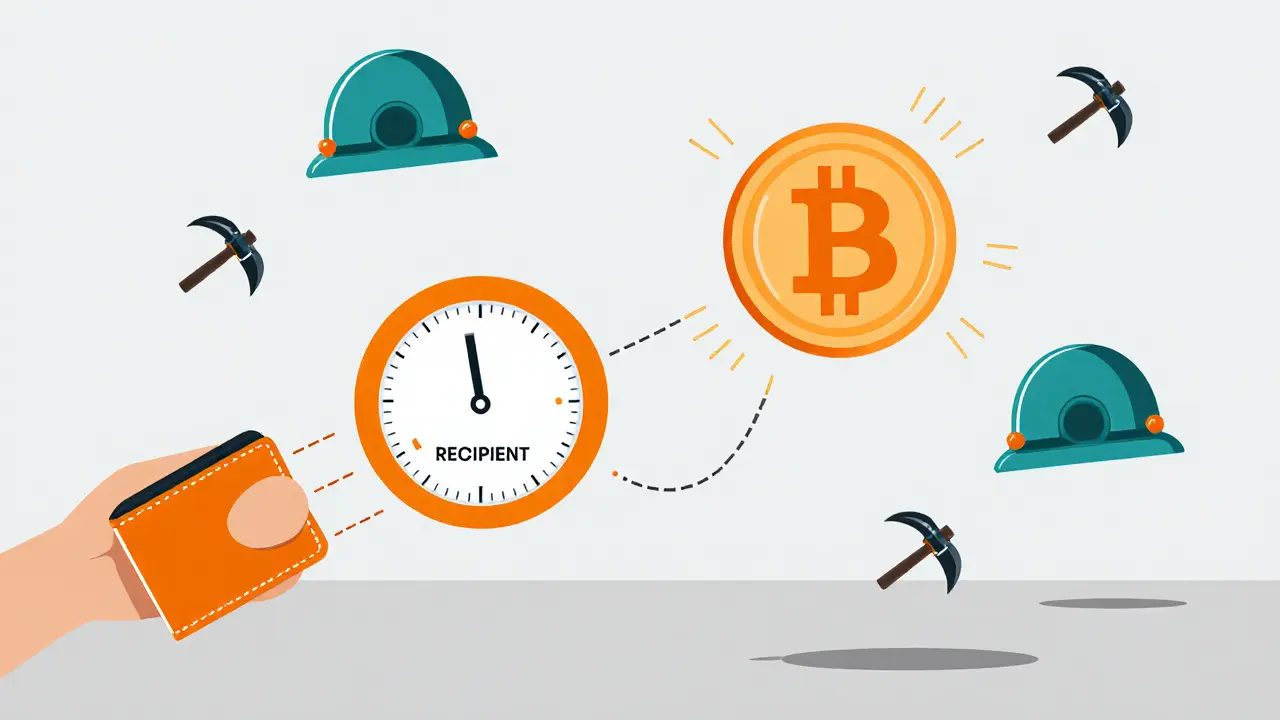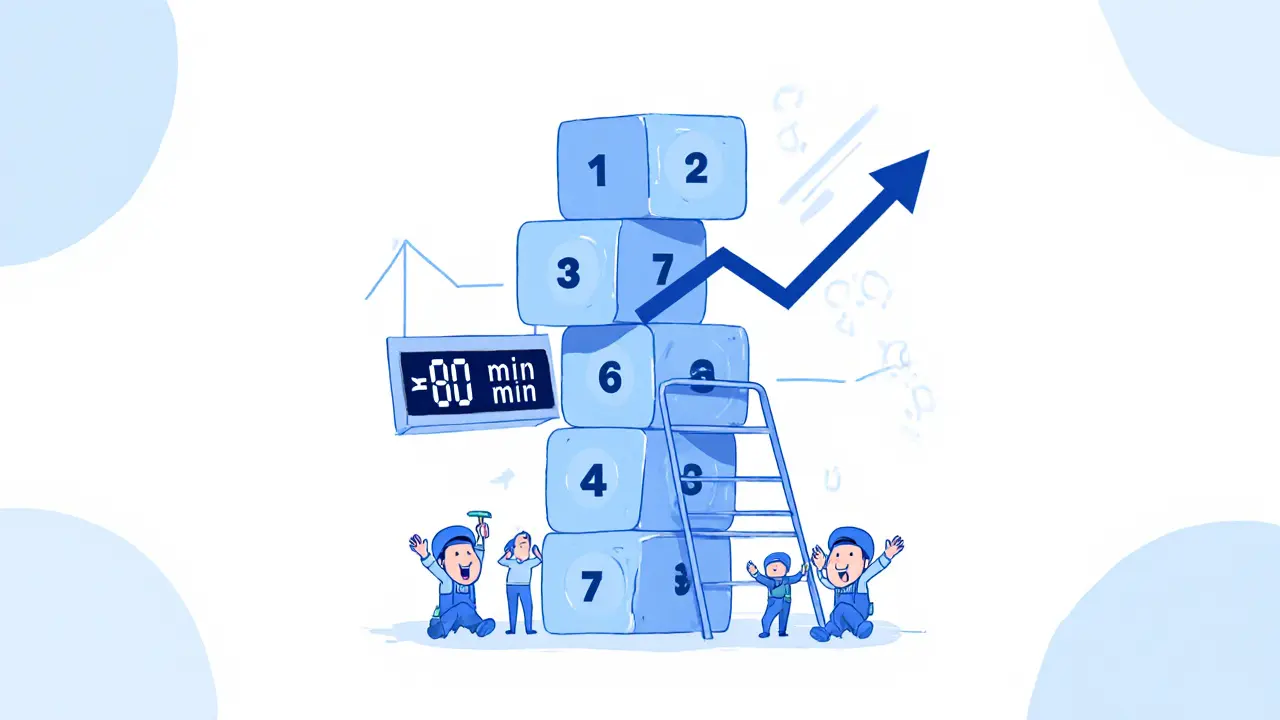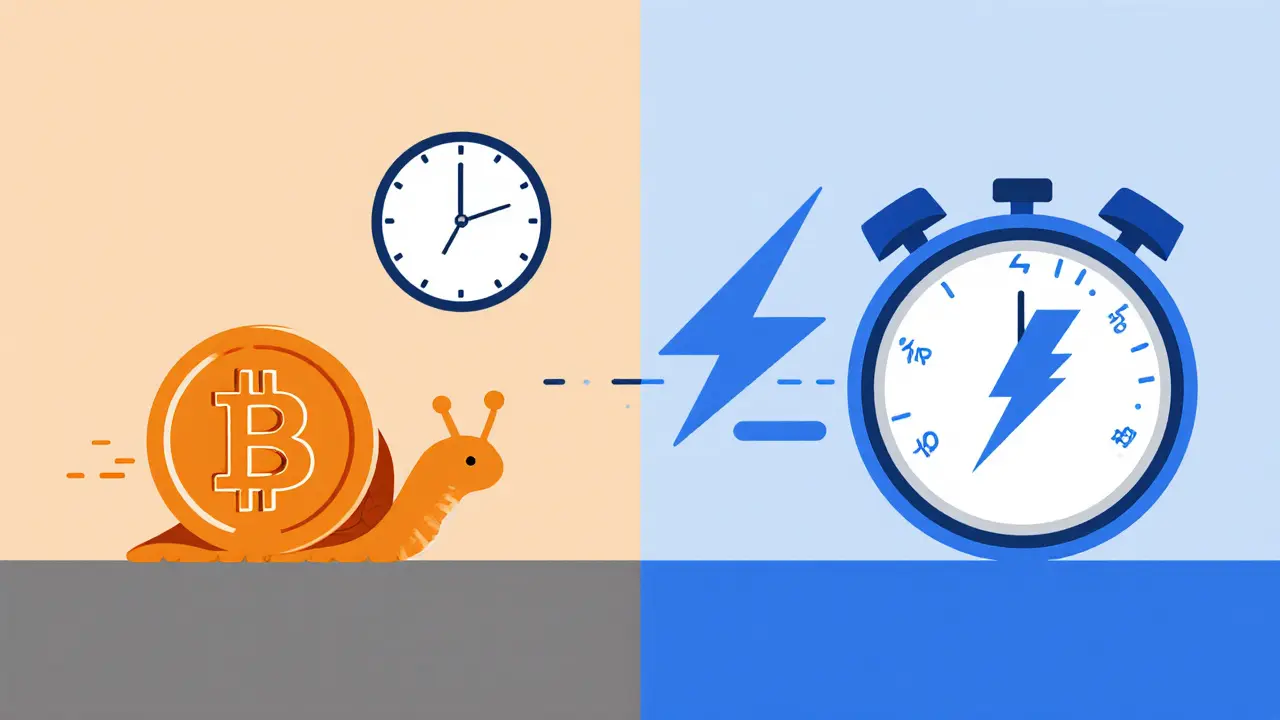Understanding Bitcoin Transaction Finality Time: How Long Does a Bitcoin Payment Take?
 Dec, 29 2024
Dec, 29 2024
Bitcoin Transaction Finality Calculator
Enter values to see estimated finality time
How this works: Bitcoin averages 10 minutes per block. Finality time equals confirmations × block time × congestion factor.
Standard recommendation: 6 confirmations for large transactions (≈60 minutes).
When you send Bitcoin, Bitcoin transaction finality is the period between broadcasting a transaction and reaching a point where it cannot be reversed. That waiting period is the heart of Bitcoin’s security model, but it also explains why a simple transfer can feel sluggish compared with credit‑card payments or newer blockchains.
Why Bitcoin Uses Probabilistic Finality
Bitcoin relies on Proof‑of‑Work (PoW) to reach consensus. Every ten minutes, miners solve a cryptographic puzzle and add a new block to the chain. When your transaction lands in a freshly mined block, it has **one confirmation**. Each subsequent block that builds on top of that block adds another confirmation, and the cost for an attacker to rewrite history grows exponentially. Because the network can’t guarantee that a block will never be orphaned, Bitcoin settles on a probabilistic model: the more confirmations, the higher the confidence that the transaction is immutable.
How Long Does It Actually Take?
The industry standard is to wait for six confirmations before treating a Bitcoin payment as final. With an average block time of ten minutes, six confirmations translate to roughly sixty minutes. In practice, the timeline can stretch or shrink depending on network congestion, fee levels, and luck with miner selection.
- 1 confirmation: transaction appears in a block, roughly 10 minutes.
- 3 confirmations: ~30 minutes, often enough for small exchanges.
- 6 confirmations: ~60 minutes, the gold‑standard for large transfers.
If the mempool is crowded, miners prioritize higher fees, and a low‑fee transaction might sit pending for 30 minutes or more before its first confirmation. Conversely, during quiet periods a transaction can be included in the next block, shaving off several minutes.
Economic Security Behind Each Confirmation
Every new block adds an exponential security margin. The "security budget"-the total hash power and electricity cost protecting the network-creates a financial deterrent. After six confirmations, rewinding the chain would require redoing the work of at least six blocks, which, given Bitcoin’s total hash rate (over 400 EH/s in 2025), is economically infeasible for any rational attacker.

Comparing Finality Across Blockchains
Bitcoin’s hour‑long finality is intentional. Other platforms trade speed for a different security model. The table below shows a quick snapshot of how Bitcoin stacks up against a few notable alternatives.
| Network | Consensus Type | Typical Finality | Use‑Case Focus |
|---|---|---|---|
| Bitcoin | Proof‑of‑Work | ~60 minutes (6 confirmations) | Store of value, high‑value settlement |
| Ethereum | Proof‑of‑Stake (Ethereum 2.0) | ~5‑12 minutes (finality via Casper) | DeFi, smart contracts |
| Sei Network | Twin‑Turbo (PoS + BFT) | <400 ms | High‑throughput trading |
| Lightning Network | Layer‑2 on Bitcoin (HTLC) | Instant (sub‑second) | Micro‑payments, instant retail |
The contrast highlights why Bitcoin is described as “digital gold” - it opts for supreme security over instant settlement.
Practical Steps to Manage Bitcoin Finality
- Choose an appropriate fee. Use a fee estimator or a wallet that auto‑adjusts based on mempool conditions.
- Broadcast the transaction and note the transaction ID (TXID).
- Monitor confirmations on a blockchain explorer (e.g., Blockstream.info). Look for the "confirmations" counter.
- Wait until the required number of confirmations is reached. Most exchanges demand 3‑6; large custodians may ask for 10.
- If you need near‑instant settlement, consider routing the payment through the Lightning Network. The base chain still handles the ultimate settlement, but the user experience feels instant.
Automated services used by merchants often employ webhooks that fire when a transaction hits a preset confirmation threshold, updating order status without manual checks.
Impact of Finality on Different Users
Retail users often get frustrated when a coffee purchase takes 10‑15 minutes to clear, especially compared with Visa’s sub‑second approvals. Many newcomers confuse a “pending” status with a failed transaction, leading to repeated sends and higher fees.
Institutions-exchanges, custodians, and hedge funds-view the hour‑long window as a protective cushion. The longer the confirmation window, the more confidence they have that a double‑spend attempt will be uneconomical. This is why a 6‑confirmation rule is baked into compliance policies worldwide.
Developers building cross‑chain bridges or DeFi applications must account for Bitcoin’s slower finality. A bridge that moves assets from Ethereum to Bitcoin typically locks the Ethereum side instantly, but it must wait for Bitcoin confirmations before releasing the counterpart, creating a latency gap.

Layer‑2 Solutions: Bridging the Speed Gap
Since the original design of Bitcoin can’t be changed without near‑universal consensus, the community has turned to Lightning Network as a practical workaround. Lightning creates payment channels between participants; once a channel is funded on‑chain, subsequent payments are settled off‑chain with cryptographic guarantees. The final settlement on the Bitcoin blockchain still inherits the 6‑confirmation rule, but the user sees an instant credit.
The Taproot upgrade (November 2021) improved script efficiency and privacy but left the fundamental block time untouched. Future proposals like Schnorr signatures or Bitcoin Improvement Proposal 340 aim to reduce transaction size and cost, yet the consensus‑level finality timeline will likely stay at ~10 minutes per block.
Regulatory Perspective on Finality
Regulators appreciate the built‑in fraud protection that comes with Bitcoin’s finality. Because a transaction becomes practically irreversible after six confirmations, chargebacks-a common issue in card payments-are virtually impossible. This has led some jurisdictions to treat Bitcoin transfers as “final” for AML/KYC reporting purposes, simplifying compliance for exchanges that can rely on the blockchain’s immutable record.
Future Outlook
Analysts agree that Bitcoin’s finality characteristics will remain stable for the foreseeable future. Any change to block timing or confirmation standards would require a hard fork with overwhelming community support-a scenario that’s historically rare. Meanwhile, the ecosystem continues to grow layer‑2 solutions and cross‑chain bridges that give users the best of both worlds: Bitcoin’s security paired with near‑instant user experiences.
What is Bitcoin transaction finality?
Bitcoin transaction finality is the time it takes for a transaction to become irreversible, usually measured by the number of confirmations a transaction receives on the blockchain.
Why do most services wait for six confirmations?
Six confirmations (about 60 minutes) make a transaction extremely costly to reverse because an attacker would need to redo the proof‑of‑work for six consecutive blocks, which is economically infeasible.
Can I use Bitcoin for instant payments?
Direct on‑chain Bitcoin payments aren’t instant, but the Lightning Network enables sub‑second payments while still settling on the Bitcoin chain later.
How do fees affect confirmation time?
Higher fees incentivize miners to include your transaction in the next block, reducing the waiting period for the first confirmation. Low fees may cause the transaction to sit in the mempool for multiple blocks.
Is Bitcoin’s hour‑long finality a disadvantage?
It depends on the use case. For high‑value, low‑frequency transfers, the security outweighs speed. For everyday retail, layer‑2 solutions or faster blockchains are preferred.
Derajanique Mckinney
October 25, 2025 AT 15:00Sheetal Tolambe
October 26, 2025 AT 02:06Pranav Shimpi
October 27, 2025 AT 00:48Frech Patz
October 27, 2025 AT 18:56jummy santh
October 28, 2025 AT 16:54james mason
October 28, 2025 AT 17:49Rosanna Gulisano
October 28, 2025 AT 19:39gurmukh bhambra
October 29, 2025 AT 10:20Anna Mitchell
October 29, 2025 AT 20:28Sunny Kashyap
October 30, 2025 AT 08:29